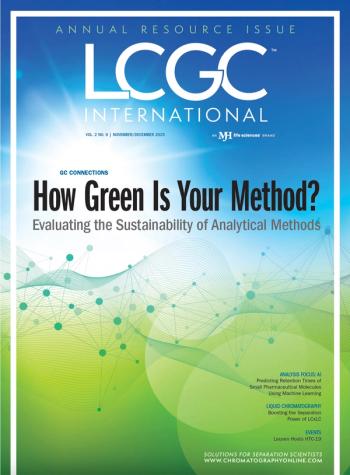
Call for Papers: Current Trends in Mass Spectrometry
LCGC and Spectroscopy magazines are seeking contributed manuscripts for “Current Trends in Mass Spectrometry,†a supplement to be published in March 2013, as part of an ongoing series.
LCGC
and
Spectroscopy
magazines are seeking contributed manuscripts for “Current Trends in Mass Spectrometry,” a supplement to be published in March 2013, as part of an ongoing series.
This supplement will examine developments in mass spectrometry and MS-hyphenated methods and their application to analytical problems in many fields, including but not limited to pharmaceutical and biopharmaceutical discovery, development, and manufacturing, biology and medicine, energy, the environment, forensics, defense, and food safety.
Manuscripts should be approximately 2,500¬¬–3,500 words long, plus figures and tables as needed, and follow a standard experimental article format, including an abstract of approximately 150-200 words. Figures and tables, along with their captions, should appear at the end of the manuscript, and figures also must be sent as separate files, preferably in JPG, TIF, PNG, or XLS format. References should be called out using numbers in parentheses and listed at the end of the manuscript in numerical order.
Submissions from equipment manufacturers will be considered but must be devoid of promotional content, and authors must not make comparisons between products from different manufacturers.
Submission Deadlines
March 2013 issue:
Abstracts: November 19, 2012
Completed manuscripts: January 14, 2013
Where to submit: Send all proposals and completed articles to Editor Laura Bush, at lbush@advanstar.com (tel. +1.732.346.3020).
About LCGC
For nearly 30 years, LCGC has been the gold standard relied upon by chromatographers across all technique areas for objective, unbiased, nuts-and-bolts technical information they can use in their labs every day. LCGC’s columns and peer-reviewed articles continue to bring readers technical advice from the most respected, veteran industry experts in the areas of UHPLC, HPLC, GC, LC–MS, GC–MS, CE, SFC, and more.
About Spectroscopy
For more than 25 years, Spectroscopy has been providing information to enhance productivity, efficiency, and the overall value of spectroscopic instruments and methods as a practical analytical technology across a variety of fields. Scientists, technicians, and laboratory managers gain proficiency and competitive advantage for the real-world issues they face through unbiased, peer-reviewed technical articles, trusted troubleshooting advice, best-practice application solutions, and educational web seminars.
Newsletter
Join the global community of analytical scientists who trust LCGC for insights on the latest techniques, trends, and expert solutions in chromatography.



